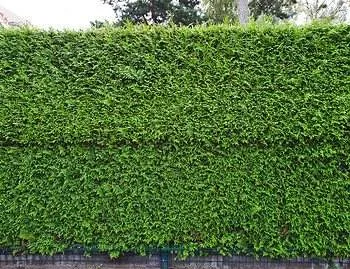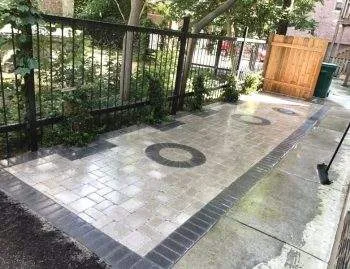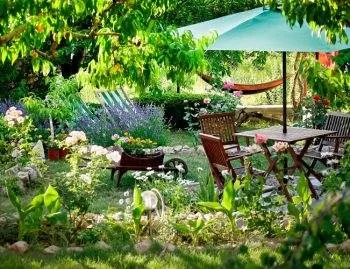Creating a pollinator-friendly garden in Chicago is an important step in supporting urban biodiversity and promoting ecosystem health. Pollinators, such as bees, butterflies, and hummingbirds, are essential for the reproduction of many plants, including fruits, vegetables, and flowers. In this article, we will explore the benefits of pollinator gardens, the unique challenges of urban gardening in Chicago, and practical strategies for creating a thriving pollinator habitat in your yard. By the end of this guide, you will have the knowledge and tools to design, plant, and maintain a beautiful and ecologically valuable pollinator garden in the Chicago area.
Start Your Pollinator Garden
Benefits of Creating a Pollinator-Friendly Garden
Supporting biodiversity is one of the primary benefits of creating a pollinator-friendly garden in Chicago. By providing food sources and habitats for native Illinois pollinators, such as bees, butterflies, and hummingbirds, you contribute to the preservation of these vital species. Pollinator gardens also play a crucial role in maintaining ecosystem balance by ensuring the reproduction of plants and the continuation of food chains.
In addition to ecological benefits, pollinator gardens enhance the beauty and value of urban spaces. Colorful blooms, diverse foliage, and the presence of pollinators themselves add visual interest and life to yards and communities. Pollinator gardens also provide opportunities for education and engagement, as they can serve as living laboratories for learning about plant-animal interactions and conservation.
Challenges of Urban Gardening in Chicago
Urban gardening in Chicago presents several unique challenges that must be addressed when creating a pollinator-friendly garden. Limited space is a common issue, as many city dwellers have small yards or only balconies to work with. Soil quality can also be a concern, as urban soils may be compacted, contaminated, or lacking in organic matter.
Chicago's weather conditions pose another challenge, with cold winters, hot summers, and variable precipitation. Gardeners must choose plants that can tolerate these conditions and provide resources for pollinators throughout the growing season. Additionally, balancing aesthetic preferences with pollinator needs can be difficult, as some pollinator-friendly plants may not fit traditional landscaping norms.
Soil Preparation and Amendments for Pollinator Health
Proper soil preparation is essential for creating a healthy pollinator garden. Good drainage is crucial to prevent waterlogging and root rot, which can be detrimental to pollinator plants. Incorporating organic matter, such as compost or well-rotted manure, improves soil structure, moisture retention, and nutrient availability.
| Amendment | Benefits |
|---|---|
| Compost | Improves soil structure, moisture retention, and nutrient content |
| Well-rotted manure | Adds nutrients and organic matter to the soil |
| Perlite or vermiculite | Improves drainage and aeration in heavy soils |
| Sand | Increases drainage in clay soils |
Other techniques for improving soil quality include:
- Tilling or double-digging to loosen compacted soils
- Conducting soil tests to determine pH and nutrient levels
- Adjusting pH with lime (for acidic soils) or sulfur (for alkaline soils)
- Applying organic fertilizers, such as bone meal or fish emulsion, to provide additional nutrients
By creating well-draining, nutrient-rich soil, you lay the foundation for a thriving pollinator garden that can support a diverse array of plants and wildlife.
Seasonal Planting Strategies for Chicago's Weather
Chicago's weather conditions require careful planning and selection of pollinator plants to ensure a continuous supply of nectar and pollen throughout the growing season. Spring bulbs, such as crocuses, snowdrops, and grape hyacinths, provide early-season food sources for pollinators emerging from hibernation. Planting a variety of native wildflowers, like coneflowers, black-eyed Susans, and asters, ensures a succession of blooms from summer through fall.
| Season | Pollinator Plants |
|---|---|
| Spring | Crocuses, snowdrops, grape hyacinths, Virginia bluebells, wild columbine |
| Summer | Purple coneflowers, black-eyed Susans, butterfly weed, milkweed, bee balm, phlox |
| Fall | New England asters, goldenrod, sedum, ironweed, joe-pye weed |
It is also important to provide host plants for butterfly and moth larvae, such as milkweed for monarchs and parsley for black swallowtails. Overwintering considerations include leaving some dead stems and leaf litter as shelter for hibernating insects and planting evergreens for winter interest and protection.
Water-Wise Irrigation Techniques
Efficient irrigation is key to conserving water while supporting pollinator health in Chicago gardens. Drip irrigation systems deliver water directly to plant roots, minimizing evaporation and runoff. This targeted approach reduces water waste and helps maintain consistent soil moisture levels, which is vital for pollinator plants.
Mulching with organic materials, such as shredded leaves, straw, or bark chips, retains soil moisture and moderates soil temperature fluctuations. Proper mulching also suppresses weed growth, reducing competition for water and nutrients. Other water-wise techniques include:
- Grouping plants with similar water needs together
- Watering deeply and less frequently to encourage deep root growth
- Installing rain barrels to collect and store rainwater for irrigation
- Using drought-tolerant native plants adapted to Chicago's climate
By implementing these water-wise strategies, you can create a pollinator garden that is both beautiful and sustainable, even in the face of Chicago's variable weather conditions.
Maximizing Space with Vertical Gardening and Containers
Vertical gardening and container planting offer innovative solutions for creating pollinator habitats in limited urban spaces. Trellises, arbors, and wall-mounted planters allow vines and climbing plants, like clematis and honeysuckle, to grow vertically, maximizing space for pollinator forage. Living walls, or green walls, are another option, featuring modular panels or pockets filled with pollinator-friendly plants.
| Vertical Gardening Technique | Benefits for Pollinators |
|---|---|
| Trellises and arbors | Provide support for climbing plants, increasing vertical space |
| Wall-mounted planters | Allow for pollinator plants to be grown on walls or fences |
| Living walls | Create dense, diverse pollinator habitats in limited space |
Container gardening is another effective way to create pollinator habitats in small yards or on balconies. Pots, hanging baskets, and window boxes can be filled with a variety of pollinator plants, such as herbs, annuals, and native perennials. When selecting containers, choose those with drainage holes and use well-draining potting mix to prevent waterlogging. Grouping containers together creates a more substantial pollinator habitat and makes watering and maintenance more efficient.
Selecting Pollinator-Friendly Native Plants for Chicago Gardens
Native plants are the foundation of a successful pollinator garden in Chicago. These plants have co-evolved with local pollinators and provide the specific nectar, pollen, and host plant resources they need to thrive. Some excellent native pollinator plants for Chicago gardens include:
- Echinacea (coneflowers): Provide nectar and pollen for bees and butterflies
- Asclepias (milkweed): Host plant for monarch butterfly larvae and nectar source for adults
- Rudbeckia (black-eyed Susans): Attract a wide variety of pollinators with their showy flowers
- Monarda (bee balm): Nectar-rich flowers that attract bees, butterflies, and hummingbirds
- Liatris (blazing star): Spikes of purple flowers that attract butterflies and bees
When designing your pollinator garden, choose a diverse mix of native plants with varying bloom times, colors, and growth habits. This diversity ensures a continuous supply of nectar and pollen and creates a visually interesting landscape. Including native grasses and sedges provides nesting materials and shelter for pollinators, enhancing the overall habitat value of your garden.
Integrating Pollinator Gardens into Existing Landscaping
Integrating a pollinator garden into an existing landscape requires careful planning and design. The goal is to create a cohesive and visually appealing space that seamlessly blends pollinator-friendly plants with other landscape elements. Use repetition of colors, textures, and forms to create unity throughout the garden. Grouping plants in drifts or masses creates a stronger visual impact and makes it easier for pollinators to locate their preferred flowers.
When selecting locations for pollinator plants, consider their sun and moisture requirements. Most pollinator plants prefer full sun and well-draining soil, so choose sites accordingly. Use curved borders and paths to soften the edges of the pollinator garden and create a more natural, flowing appearance. Incorporate educational signage or labels to help visitors identify plants and learn about their ecological importance.
| Design Principle | Application in Pollinator Gardens |
|---|---|
| Repetition | Use recurring colors, textures, and forms to create unity and visual interest |
| Grouping | Mass plants together in drifts for stronger visual impact and easier pollinator access |
| Site Selection | Choose sunny, well-draining locations that meet the needs of pollinator plants |
| Curved Borders | Soften edges and create a natural, flowing appearance that complements the pollinator garden |
| Educational Signs | Provide information about plant species, pollinator benefits, and conservation efforts |
Hardscaping Features for Pollinators
Hardscaping elements, such as bee hotels, water features, and rock gardens, provide additional resources and habitat for pollinators. Bee hotels are structures designed to offer nesting sites for solitary bees, which are important pollinators. These hotels can be constructed from wood, bamboo, or hollow stems, and should be placed in a sunny, sheltered location.
Water features, like birdbaths or shallow dishes filled with pebbles, provide drinking water and puddling areas for pollinators. Butterflies, in particular, require shallow, muddy puddles to obtain minerals and salts. When choosing hardscape materials, select those that are safe for pollinators. Avoid treated wood or materials that may leach chemicals, and ensure that any paints or finishes are non-toxic.
| Hardscaping Feature | Benefits for Pollinators |
|---|---|
| Bee Hotels | Provide nesting sites for solitary bees, which are important pollinators |
| Water Features | Offer drinking water and puddling areas for butterflies and other pollinators |
| Rock Gardens | Create shelter and basking spots for pollinators, and can be planted with drought-tolerant species |
Organic Pest Management and Pollinator Health
Protecting pollinators from harmful pesticides is crucial in a pollinator-friendly garden. Avoid using synthetic pesticides and fertilizers, as these can have detrimental effects on pollinator populations. Instead, opt for organic pest management strategies that work with nature to maintain a healthy balance in the garden.
Encouraging beneficial insects, such as ladybugs, lacewings, and parasitic wasps, helps control pest populations naturally. These predators feed on common garden pests like aphids, mites, and caterpillars. Planting a diverse array of native plants promotes a balanced ecosystem where beneficial insects can thrive.
Other organic pest management techniques include:
- Handpicking pests or using physical barriers, like row covers
- Applying organic insecticidal soaps or horticultural oils for targeted control
- Practicing companion planting to deter pests and attract beneficial insects
- Maintaining healthy soil and plants through proper watering and fertilization
By adopting organic pest management practices, you create a safer environment for pollinators and other beneficial wildlife in your garden.
Pet and Child Safety in Pollinator Gardens
Creating a pollinator garden that is safe for both pets and children is an important consideration for many families. When selecting pollinator plants, choose those that are non-toxic and safe for consumption. Avoid plants with thorns, spines, or irritating sap, as these can cause injury or discomfort.
To minimize the risk of bee or wasp stings, provide a designated play area away from the most active parts of the pollinator garden. Teach children to observe pollinators from a distance and avoid disturbing them while they work. If someone in your family has a severe bee allergy, consider planting pollinator forage away from high-traffic areas and keeping EpiPens on hand.
| Safety Tip | Explanation |
|---|---|
| Choose safe plants | Select pollinator plants that are non-toxic and free from thorns or irritating sap |
| Designated play area | Provide a safe space for children to play, away from the most active parts of the pollinator garden |
| Observe from a distance | Teach children to watch pollinators without disturbing them, to avoid stings or bites |
| Allergy awareness | If family members have bee allergies, plant pollinator forage away from high-traffic areas and keep EpiPens accessible |
By following these safety guidelines, you can create a pollinator garden that is both enjoyable and secure for your family and pets.
Weed Control and Management
Effective weed control is essential for maintaining a healthy and visually appealing pollinator garden. However, it's important to approach weed management in a way that minimizes harm to pollinators and other beneficial insects. Hand weeding is the most targeted and environmentally friendly method for removing unwanted plants. Regular weeding prevents weeds from setting seed and competing with pollinator plants for resources.
Mulching is another effective strategy for weed suppression. Apply a layer of organic mulch, such as shredded leaves, bark chips, or straw, around pollinator plants. Mulch blocks light from reaching weed seeds, inhibiting their germination, and retains soil moisture, reducing the need for frequent watering. Additionally, as mulch decomposes, it adds nutrients to the soil, benefiting pollinator plants.
Companion planting can also be used for natural weed control. Planting dense groundcovers, like creeping thyme or sedums, around taller pollinator plants outcompetes weeds and reduces the need for mulching. Some companion plants, like marigolds and nasturtiums, release compounds that deter certain weed species, providing an additional layer of control.
| Weed Control Method | Benefits |
|---|---|
| Hand weeding | Most targeted and environmentally friendly method, prevents weeds from setting seed |
| Mulching | Suppresses weed growth, retains soil moisture, and adds nutrients to the soil as it decomposes |
| Companion planting | Dense groundcovers outcompete weeds, some companion plants release compounds that deter weed growth |
By using these natural weed control methods, you can maintain a thriving pollinator garden while minimizing the use of herbicides that may harm pollinators and other beneficial insects.
Maintenance and Seasonal Care
Proper maintenance and seasonal care are crucial for the long-term success of your pollinator garden. Regularly deadheading spent blooms encourages plants to produce more flowers, extending the availability of nectar and pollen for pollinators. When pruning, use sharp, clean tools to prevent damage and disease transmission. Avoid pruning more than one-third of the plant at a time, and leave some dead stems and leaf litter as overwintering sites for pollinators.
| Season | Maintenance Tasks |
|---|---|
| Spring | Clean up winter debris, divide and transplant crowded perennials, plant new pollinator species |
| Summer | Water deeply during dry spells, deadhead spent blooms, monitor for pests and diseases |
| Fall | Cut back perennials, leave some dead stems for overwintering pollinators, apply mulch |
| Winter | Monitor for winter damage, provide additional shelter for pollinators if needed |
Throughout the growing season, monitor your pollinator garden for signs of pests, diseases, or nutrient deficiencies. Address issues promptly using organic methods to maintain plant health and pollinator safety. In the fall, cut back perennials and apply a fresh layer of mulch to protect plants over the winter. Leave some dead stems and leaf litter as shelter for overwintering pollinators.
Community Engagement and Education
Creating a pollinator-friendly garden extends beyond your own yard. Engaging with your community and educating others about the importance of pollinators is key to making a larger impact. Encourage your neighbors to plant pollinator-friendly species and reduce their use of pesticides. Share your knowledge and experiences through local gardening clubs, workshops, or online forums.
Participate in local pollinator conservation efforts, such as citizen science projects or habitat restoration initiatives. These projects often involve monitoring pollinator populations, planting native species, or creating pollinator corridors to connect fragmented habitats. By working together with your community, you can create a network of pollinator-friendly spaces that support biodiversity and ecosystem health.
Consider partnering with local schools or community organizations to create educational pollinator gardens. These gardens serve as living laboratories where children and adults can learn about plant-pollinator interactions, conservation, and sustainable gardening practices. Offer guided tours, workshops, or volunteer opportunities to engage the public and foster a sense of stewardship for pollinators.
Creating a pollinator-friendly garden in Chicago is a rewarding and impactful way to support urban biodiversity and ecosystem health. By selecting native plants, providing essential resources, and adopting sustainable gardening practices, you can create a thriving habitat for bees, butterflies, hummingbirds, and other pollinators. However, designing and installing a pollinator garden can be a daunting task for those without experience or time.
This is where R & G Almanza Landscape Inc comes in. As a family-owned landscaping and construction company with over 20 years of experience serving the greater Chicago area, we have the expertise and dedication to help you create the perfect pollinator garden. Our team of skilled professionals can guide you through the entire process, from selecting the right native plants to installing hardscaping features like bee hotels and water sources.
At R & G Almanza Landscape Inc, we pride ourselves on reliability, great communication, integrity, and quality work. We understand the importance of pollinator conservation and are committed to creating gardens that not only support these critical species but also beautify your outdoor space. Our services, including lawn care, hardscaping, native landscaping, and gardening, are tailored to meet your specific needs and preferences.
When you choose R & G Almanza Landscape Inc for your pollinator garden installation, you can trust that we will use the best practices and materials to ensure the long-term success of your garden. We stay on the leading edge of the industry, so you can be confident that your pollinator garden will be designed and installed using the latest techniques and knowledge.
Engaging with your community and educating others about the importance of pollinator conservation is key to making a larger impact. By showcasing your beautiful and thriving pollinator garden installed by R & G Almanza Landscape Inc, you can inspire your neighbors to create their own pollinator-friendly spaces and contribute to the growing network of urban habitats.
Don't wait to start supporting urban biodiversity and ecosystem health. Contact R & G Almanza Landscape Inc today to schedule your pollinator garden installation consultation. Together, we can create a beautiful, thriving habitat that supports pollinators and enhances your outdoor living space for years to come.











You must be logged in to post a comment.